Why the SP 4449 Is Such a Badass Train
![Photo credit: Drew Jacksich from San Jose, Republic of California [CC BY 2.0 (https://creativecommons.org/licenses/by/2.0)]](https://s.yimg.com/ny/api/res/1.2/wH1qG_KGLUosXWUkZ6NvvA--/YXBwaWQ9aGlnaGxhbmRlcjt3PTEyNDI7aD02MjI-/https://media.zenfs.com/en/popular_mechanics_642/d07111ce3ea384b07c398ea2b4e9ca7d)
You can’t keep a good locomotive down—especially when it has the momentum of history behind it. No matter how many times they’ve been repainted for how many purposes, retired and then rehired, vandalized or oxidized, some trains just won’t die. The Southern Pacific 4449 is one such locomotive.
Hop aboard for a little history: The 4449 is a GS-4 (Golden State/General Service) class locomotive, which started its first roll on the rails in 1941. That “Golden State” designation is telling, because it was originally assigned to the premier Coast Daylight run, pulling passenger cars between San Francisco and Los Angeles. The SP 4449’s original “Daylight” orange, black, and red livery might be the best use of Halloween colors we’ve had, but the train was destined for many different handsome, historic coats—and coasts—to come.
That 1941 birthdate clues you in. The SP 4449 is a steam locomotive, with enough push from its 300 psi boiler to run at a brisk 100 mph. But Southern Pacific was an all-oil-burning railroad, so there wasn’t any coal firing that boiler.
Though the 4449 is a considerable 110 feet long and 16 feet tall, and no shrinking violet at 433 tons, there’s a sleekness to the design that still pleases the eye. And when it turned into or moved out of a station, heads turned or moved with every roll of its big 4-8-4 wheels.
Sometimes It Takes a Village, Sometimes It Takes a Holst
In 1955, with the economics of diesel-electrics making steam trains less profitable, the 4449 was removed from its Daylight designation and line, repainted black and silver, and moved into occasional passenger and freight service. The locomotive was officially retired in late 1957 and put in storage in Southern California.
Retirement wasn’t particularly kind to the 4449. Donated to the city of Portland, Oregon in 1958, the engine was placed not far from downtown on outdoor public display at Oaks Amusement Park. But it wasn’t formally maintained, and thus was repeatedly vandalized, including having its whistle stolen.
There was one railfan, however, who took it upon himself to personally lubricate the engine in the hopes it would one day run again. The 4449 is a fabled train; Jack Holst is one of the truths that make the fable.
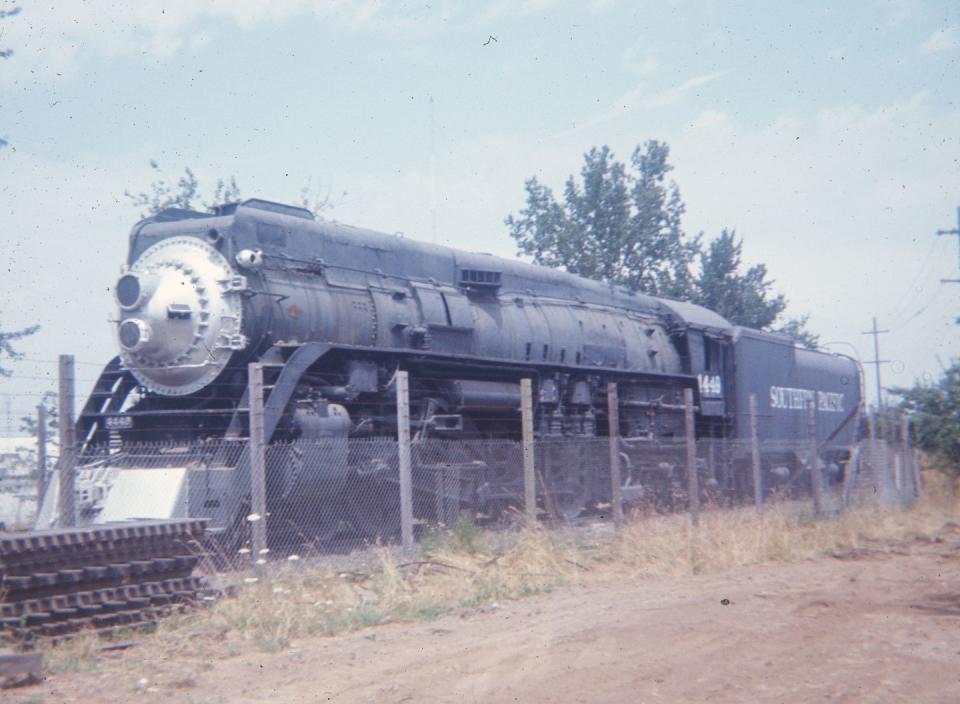
“Jack Holst periodically ran the mechanical lubricators while the locomotive was on display at Oaks in the hope that someday it might be returned to service in some capacity,” says Pat Tracy, president of the Friends of 4449 organization, a non-profit dedicated to restoring, maintaining, and operating the engine. “His work kept oil going to all of the bearing points on the locomotive while it sat for 17 years. This was invaluable to the restoration process.”
We’ll get to the wherefores of that restoration process in a minute, including a further homage to Holst and the work of the Friends, but first let’s look at it from the lonely perspective of the static engine itself. Long years of neglect in an amusement park didn’t add a whisper of promise that the 4449 would soon be whistling down any rails, except in memory.
All it took to fulfill that unspoken promise was a 200-year anniversary.
Freedom Is a Full Head of Steam
In the mid-1970s, the U.S. was moving toward its bicentennial. What more fitting a celebration than a Freedom Train to crisscross America, since trains had been that country’s connectors for so long? What more fitting than a line of display cars on that train carrying treasures of Americana, like George Washington’s copy of the Constitution and Wilt Chamberlain’s basketball shoes?
And what more fitting a train than the 4449, slumbering in obscurity those long years, but robustly willing to do the work it was designed for?
Willing, but needful of some serious TLC.
So the locomotive was evaluated in 1974 for restoration as a Freedom Train. Thanks to its inherently handsome streamlined look—a product of the tail end of the Art Deco design period—its considerable size and power, and its preserved bearings and rods, the 4449 made the cut. Enter Doyle McCormack and an able-bodied crew, working out of Burlington Northern’s Hoyt Street roundhouse in Portland.
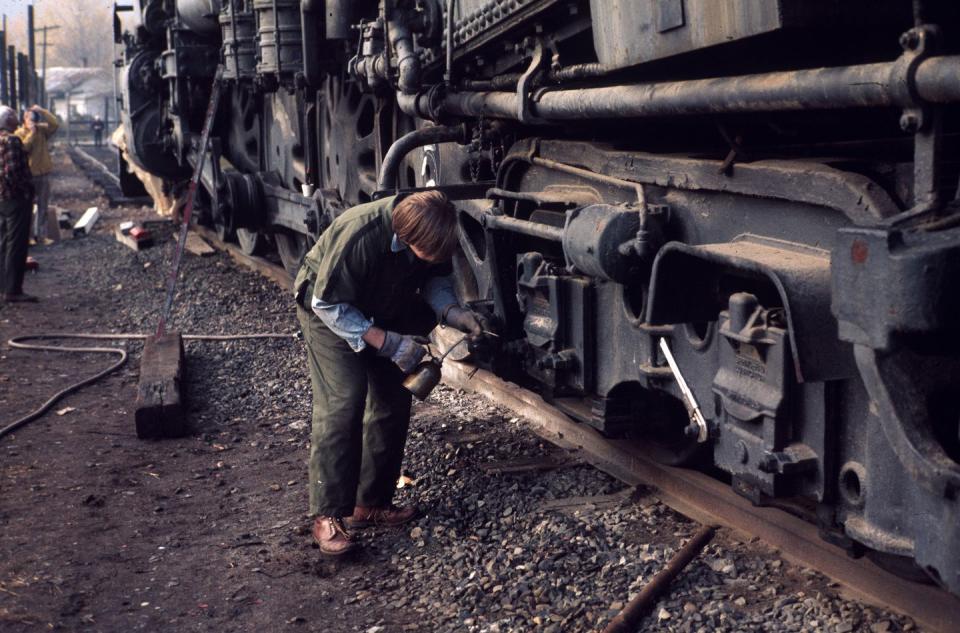
McCormack, a Union Pacific engineer, was 32 when he was designated the Chief Mechanical Officer on the restoration project. Little did he know he’d be tinkering with the 4449 for more than 40 years to come. On the restoration, there were six full-time paid members—and hundreds of volunteers—with varying backgrounds, collectively logging over 9,000 man-hours of work over five months.
The restoration wasn’t without challenges, but the crew was up to it.
“There are challenges and surprises that come with every restoration,” McCormack says. “You just have to figure out how to deal with them and move forward. We tried to use original specs when available for any replacement parts we needed. But many times we would have to reverse-engineer things to make them or have them made. We also used modern materials and methods when available in making replacement parts,” he says.
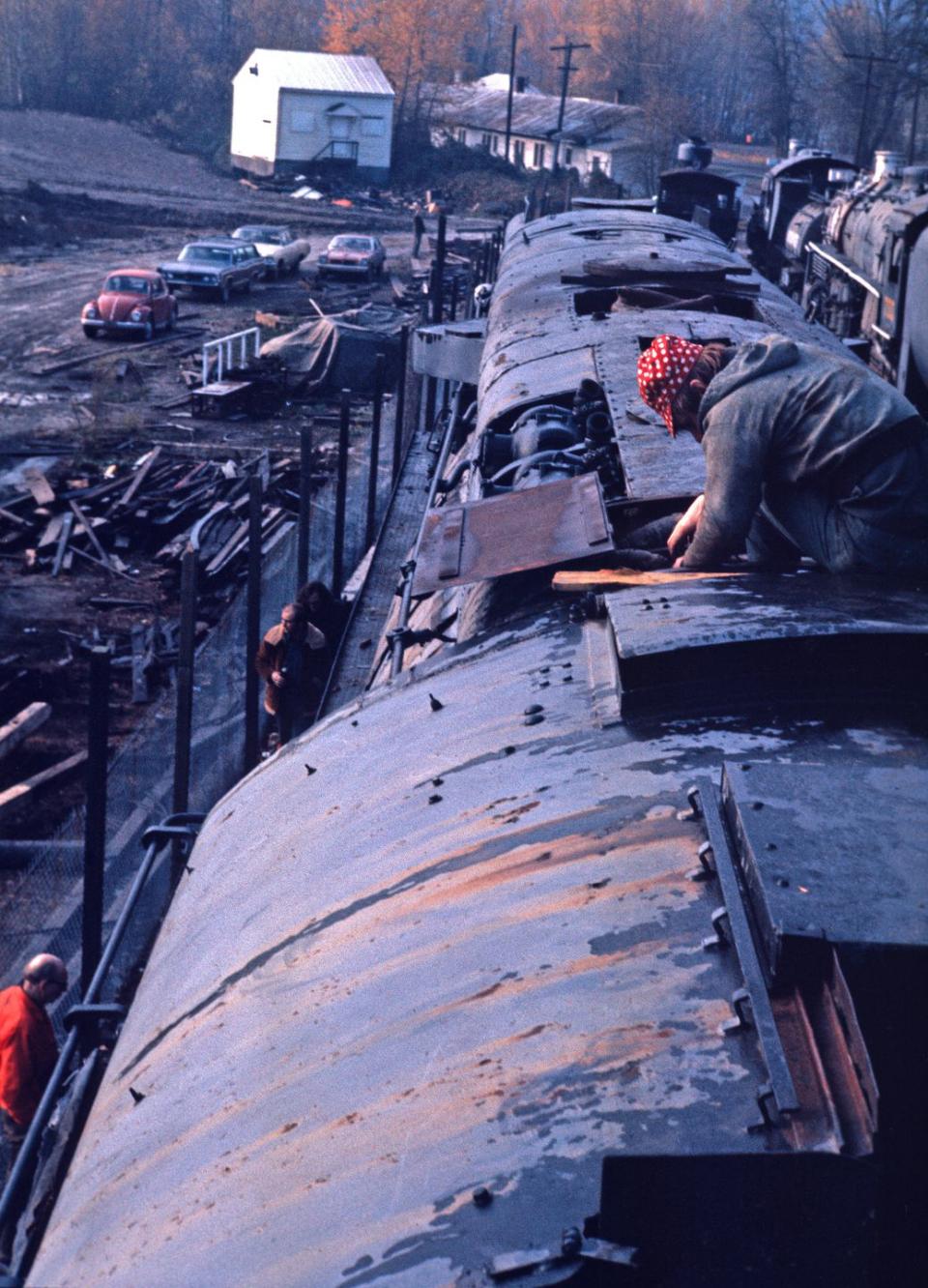
And when it comes to steam, an engineer’s work is never done.
“Having worked around the 4449 for the last 45 years has been a real education,” McCormack says. “You learn to do research on how things work and why they work in order to keep her in good running order. Some of those lessons were learned the hard way. If I live to be 100 years old, I will never learn all the lessons she has to teach.”
A Bit of the Red, White, and Blue
A Bicentennial Freedom Train can’t wear just any old getup. The 4449 was freshened up in sparkling red, white, and blue duds, pulling 10 displays with gusto around much of the continental U.S. from 1975-76.
Millions of people lined the tracks to get a glimpse of history steaming by. Richard Lamm, a Southern Pacific engineer from 1974 to 1985, regularly worked the Dunsmuir, California to Klamath Falls, Oregon track and was an extra-board engineer on the Freedom Train when it came through.
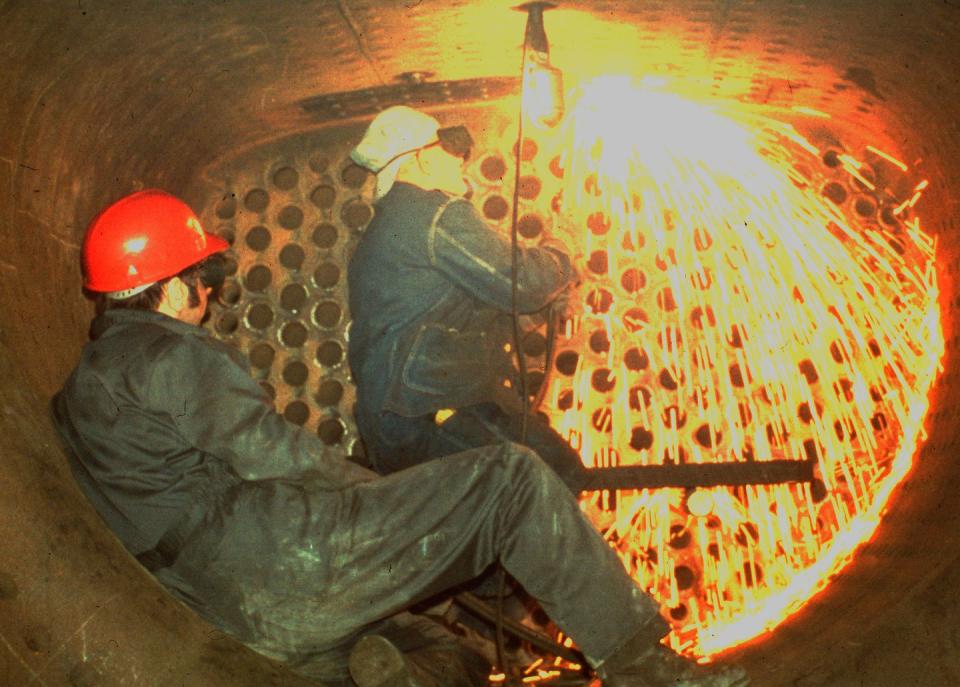
“Everywhere we went, tens of thousands of people were lined up,” Lamm says. “The cab was filled with officials and press. I was so impressed by its incredibly polished brass valves. The locomotive was like a beautiful old vintage watch that you could look into and see the gears moving.”
Those gears kept moving. After its Freedom gig, the engine pulled an Amtrak special, the Transcontinental Steam Excursion, a name worthy of the locomotive. After a couple of years on the road, the 4449 got some deserved rest back in Portland, and this time it was given a well-earned roof over its head.
But there was more work to do. The locomotive, back in its Daylight colors, did a warm-up appearance at the first Railfair in Sacramento in 1981. Then it was time to truly stoke the boiler.
To publicize the 1984 World’s Fair, the 4449 pulled a Daylight-garbed train from Portland to New Orleans and back, a tidy 7,477-mile round trip that went into the books as the longest steam-train excursion in U.S. history. (And that was after a 1983 poll in Trains magazine had already voted the 4449 as the most popular locomotive in the nation.)
A star is a star, and the 4449 got some screen time to prove it. Burt Lancaster and Kirk Douglas didn’t have the traction of a 5,500-horsepower steam engine when they all appeared together in the 1986 Disney production of Tough Guys. Doyle McCormack, of course, helmed the locomotive down the celluloid tracks.
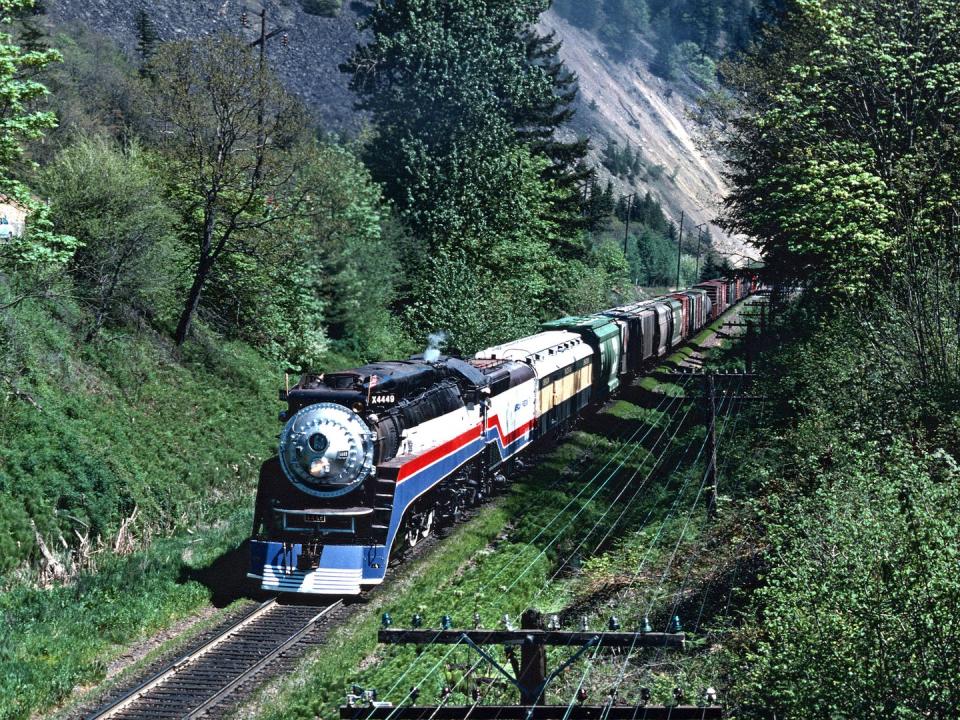
The 4449 continued to add to its wardrobe over the years. Repainted black and silver again for a Burlington Northern employee appreciation day, the terrorist attacks of September 11, 2001 prompted its return to the Freedom Train Old Glory colors. But some classic fashions remain classic, and the engine was returned to its Daylight ensemble in 2004.
A Little Help from Your Friends
Railfans’ enthusiasm runs deep. Some of the volunteers who helped with the 4449’s restoration for its Freedom Train runs, like Tracy, stuck around. He volunteered on the 4449 in 1978, and continued to do so through its storage in various Portland spots, including a long stint at the city’s Brooklyn Roundhouse from 1981 to 2012, after which it moved with a couple other old steamers (SP&S 700 and OR&N 197) to the new Oregon Rail Heritage Center.
“Prior to formally establishing the Friends, we were just a locomotive crew,” says Tracy. “Friends of SP 4449 was established in about 1991, and I’ve been here in some capacity since its inception.”
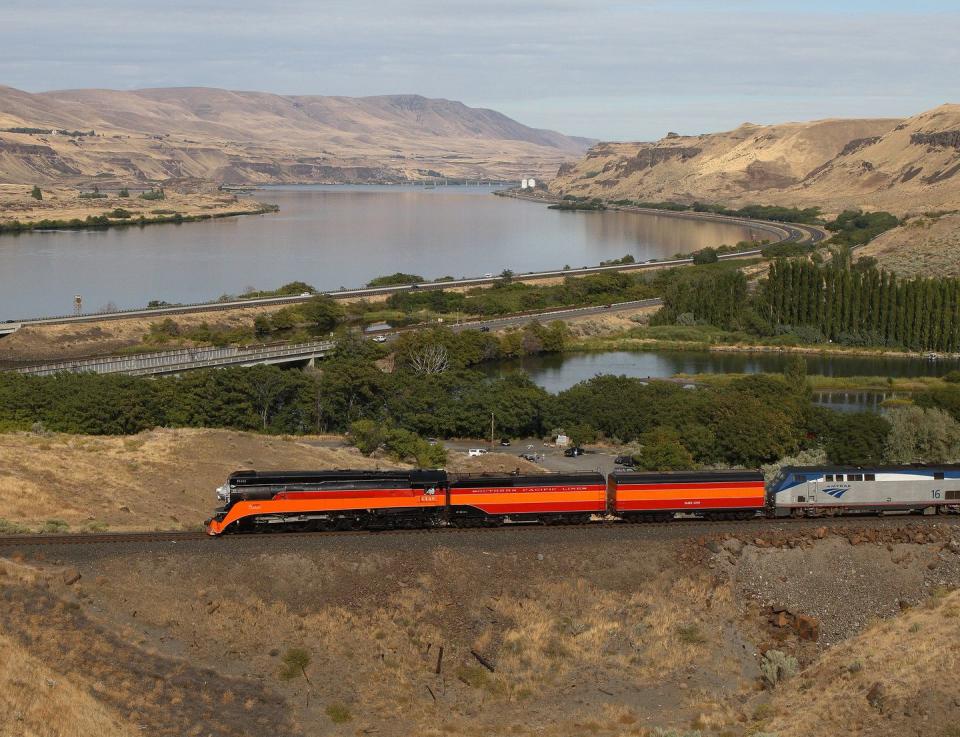
It pays to have friends, especially ones who can help with housing. The 4449 wasn’t publicly exhibited at the Brooklyn Roundhouse, which was a shame for such a fine train. But the Oregon Rail Heritage Foundation, a partnership of nonprofit organizations, worked some long years with the city to build a restoration center and public interpretive center for the three historic trains, and the Oregon Rail Heritage Center (ORHC) opened in the fall of 2012. McCormack served as the Foundation’s president until his recent retirement.
The ORHC is a working shop and museum. Since moving to the ORHC, the 4449 and the other trains are available to the public in the afternoons from Thursday to Sunday.
“We have a robust crew of knowledgeable docents that interact with visitors, allowing the crew to continue maintaining the locomotive and equipment,” Tracy says. “The public has expressed keen interest in actually getting to see the work as it’s performed.”
Vintage steam trains can’t be put on ice, particularly if they’re expected to get out and stretch their legs now and then.
“The crew continues work on improving and maintaining the locomotives,” says Tracy. “The ORHC facility is a radical improvement over the Brooklyn Roundhouse, allowing us to better maintain the locomotives on site. There’s a machine shop, maintenance pit, and drop table, all designed for maintenance of heavy steam locomotives.”
The museum gets thousands of visitors a year, with rail enthusiasts coming from all over the world specifically to see the 4449. As Tracy says, it’s become a popular spot for children’s birthday parties, retirement parties, and meetings. And when the 4449 gets out steaming on the public lines, people line up by the hundreds to get a photo … or just to see a big, vintage engine let loose in the wild.
Bells, Whistles, and Honorary Plaques
Speaking of engines stretching their legs on the open road, McCormack has probably spent more time than anyone in the cab of the 4449, whether while stationary or racing down the rails. As he explains, there’s both a practical side and intuitive side to running a steamer.
“Running the train is 90 percent of the job, and running the locomotive is the other 10,” McCormack says. “Having been an engineer for 38 years, I don’t have to concentrate on running the train and can then concentrate on running the locomotive.
Unlike modern diesel locomotives, where the systems manage themselves, on a steam locomotive you have to be able to listen to the locomotive and interpret its sounds and feel, says McCormack. “That’s where the pleasure is, sort of like a race car driver when he’s in a race trying to get the most out of the car.”
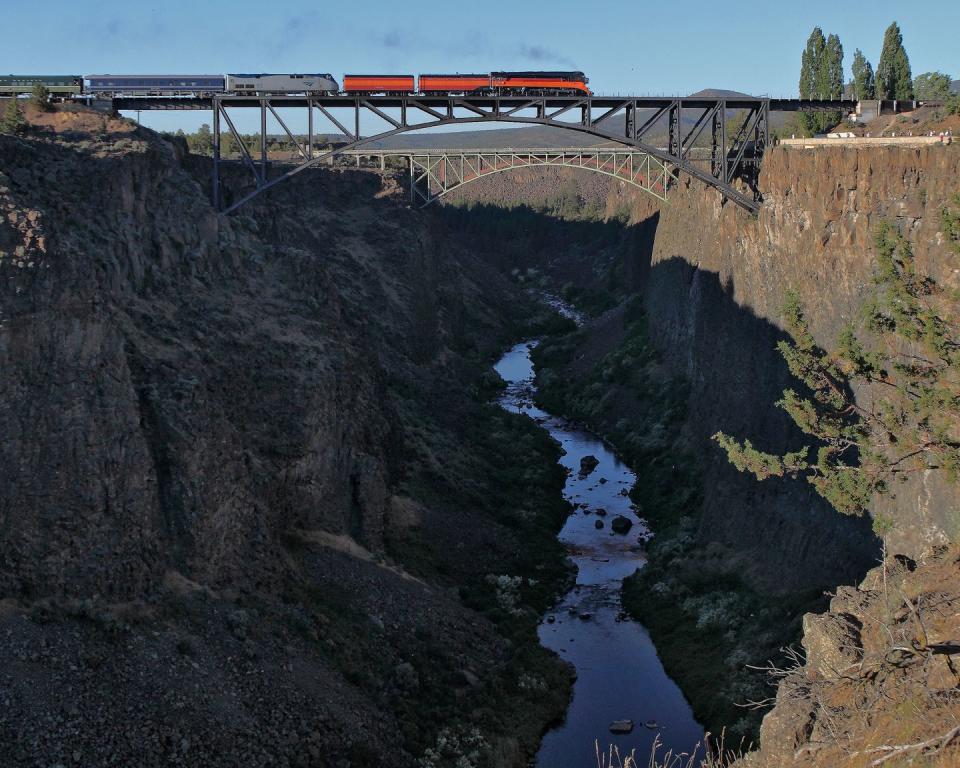
The crew wasn’t trying to get the most out of the 4449—they were just cruising—when they celebrated the 40th anniversary of the American Freedom Train at the Heritage Center in September of 2016. Passengers got to take a short, steamy trip from ORHC to Oaks Park, where Holst’s loyalty to old steam trains had made such a difference so long ago.
Sadly, Holst never got to see the fruit of his significant contributions to the life of the 4449; he passed away after an illness at the age of 38, a few years before the 4449 was chosen for Freedom Train restoration. But there’s a brass plaque mounted in the cab that attests to his dedication to steam locomotives and all things rail, now forever part of the long legacy of SP 4449.
Blocking the Tracks
That legacy, however, is in stasis for the moment. There are heavy insurance costs for organizations like the OHRF, which greatly relies on excursion runs to fund its operations. As McCormack explains, “The whole issue is liability insurance to cover the railroad. Over the years the cost of this insurance continued to increase until we—and most all of the other excursion train operators—could no longer afford to buy the necessary insurance. This meant we then needed to operate under the Amtrak umbrella for insurance.”
However, Amtrak instituted a new policy in 2018 that severely hampers the ability of the OHRF and others to organize and run excursion trains, pulled by historic engines like the 4449. In Amtrak’s words, such “operations caused significant operational distraction, failed to capture fully allocated profitable margins, and sometimes delayed our paying customers on our scheduled trains.” Thus, “one-time trips and charters are immediately discontinued.”
The Friends of the 4449 and the OHRF disagree with these conclusions, and of course are distressed by the implications.
“Amtrak was paid to run these trips—it wasn't free and it wasn’t cheap,” Tracy says. “Many privately owned passenger car owners were affected by this also. Many have had to sell their cars or store them.”
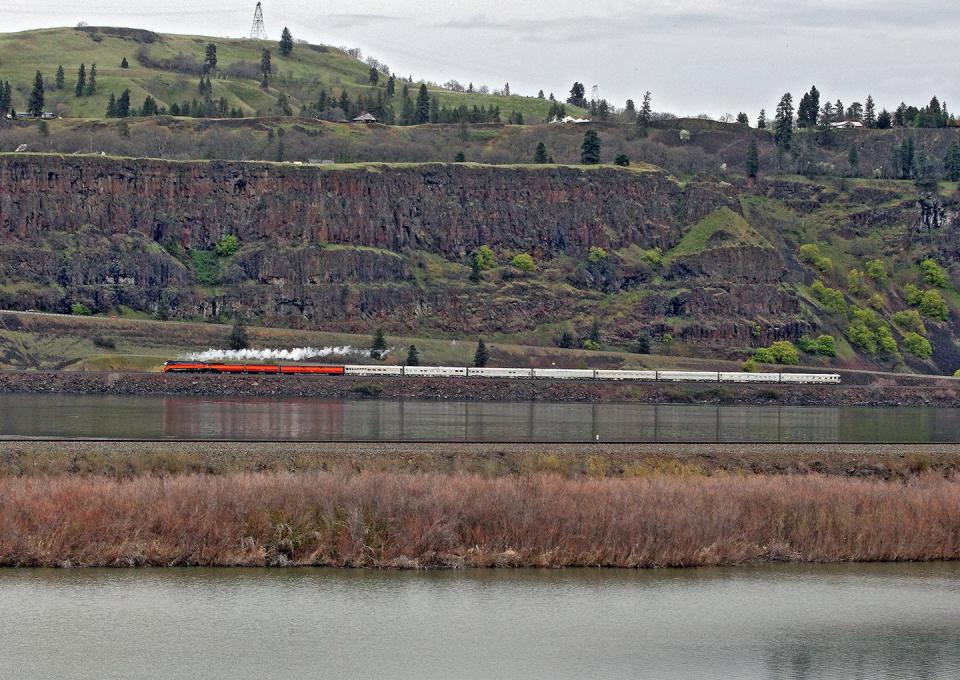
It’s not clear what the future holds for the steam locomotives and vintage cars under regular restoration at the OHRF; it would be a sharp shame to not have a chance to see them under steam again. Tracy says it well when he reflects on the 4449’s legacy.
“SP’s original streamlined design has held up though time—she’s as good looking today as in 1941,” he says. “SP 4449 was retired in 1957, restored in 1975 and has been a serviceable locomotive since that time—thousands of miles since the Freedom Train. She has been an operational locomotive for 44 years in ‘retirement.’ Few locomotives have that kind of history. She is one of a kind.”
It’s a busy retirement that many hope never ends. After all, you can’t keep a good locomotive down.
('You Might Also Like',)

